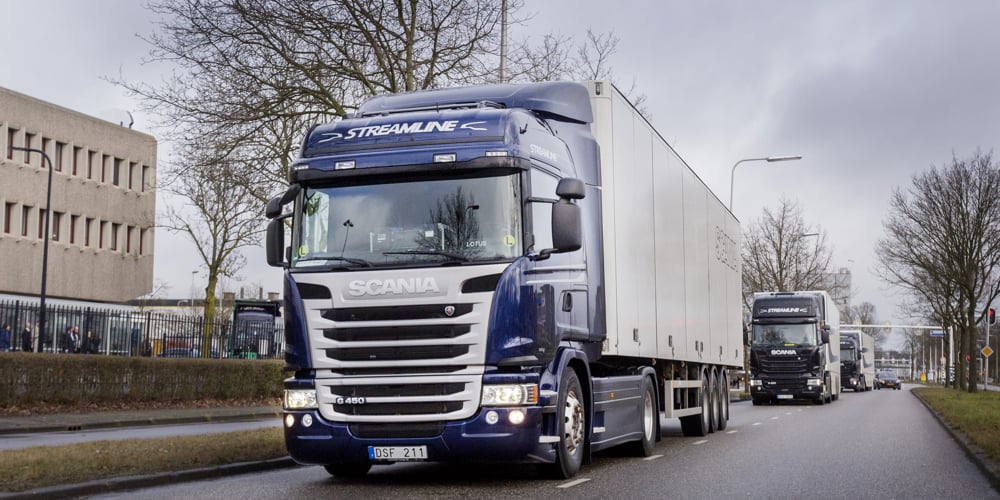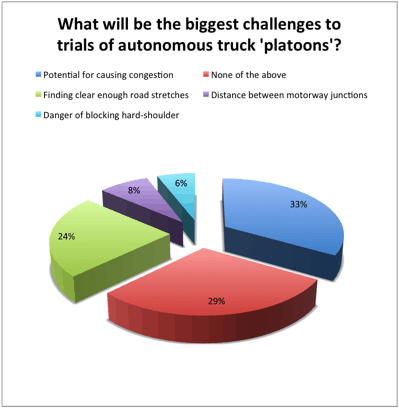
Our readers showed a surprising degree of animosity towards the development of autonomous platooning technology for trucks in the UK
We were a little surprised by the depth of opposition to platooning technology revealed by last week's poll. Notable features of the results included the proportion of people who declined to pick one of our options; we can only guess at this, but judging from the comments we received (overwhelmingly negative) it appears that they might have been looking for a way to register their opinion on the concept of autonomous lorry platooning itself. This would certainly have made for an interesting poll, but it wasn't the question we asked; we were asking about the trial only.
Of the 379 people who responded to the poll, the largest group, 34 per cent, thought that the biggest problem trial designers will face is the potential for truck platoons to cause congestion; several comments raised the prospect of difficulty in overtaking a line of heavy lorries, especially in wet conditions. The next group, on 30 per cent, were the 'None of the aboves'; this option in fact led for most of the week. Finding clear road stretches was the biggest concern of the next group, comprising 23 per cent of respondents; we noted that a satirical radio show last week featured a musical number about the singer never seeing a quiet stretch of the M6, echoing the Disney song about never seeing an elephant fly. The distance between motorway junctions, and how this would affect trial safety in the event of having to get a platoon off the road, was the choice of 8 per cent; while the smallest group, 6 per cent, thought that the potential for blocking long stretches of the hard shoulder was likely to be the biggest problem.
Many of the comments we received were from readers asking what the point of platooning was, when the option of putting freight onto trains and getting it off the road altogether existed. But as Jon Excell mentioned in his comment last week, testing is a vital part of developing such systems so there's a strong chance we'll have to get used to it, even though the biggest markets for autonomous platooning trucks are likely to be in regions with many miles of long, straight road, like the US, Canada, Australia and Russia.

Please continue to send us your thought on this topic.




Poll: Should the UK’s railways be renationalised?
I think that a network inclusive of the vehicles on it would make sense. However it remains to be seen if there is any plan for it to be for the...